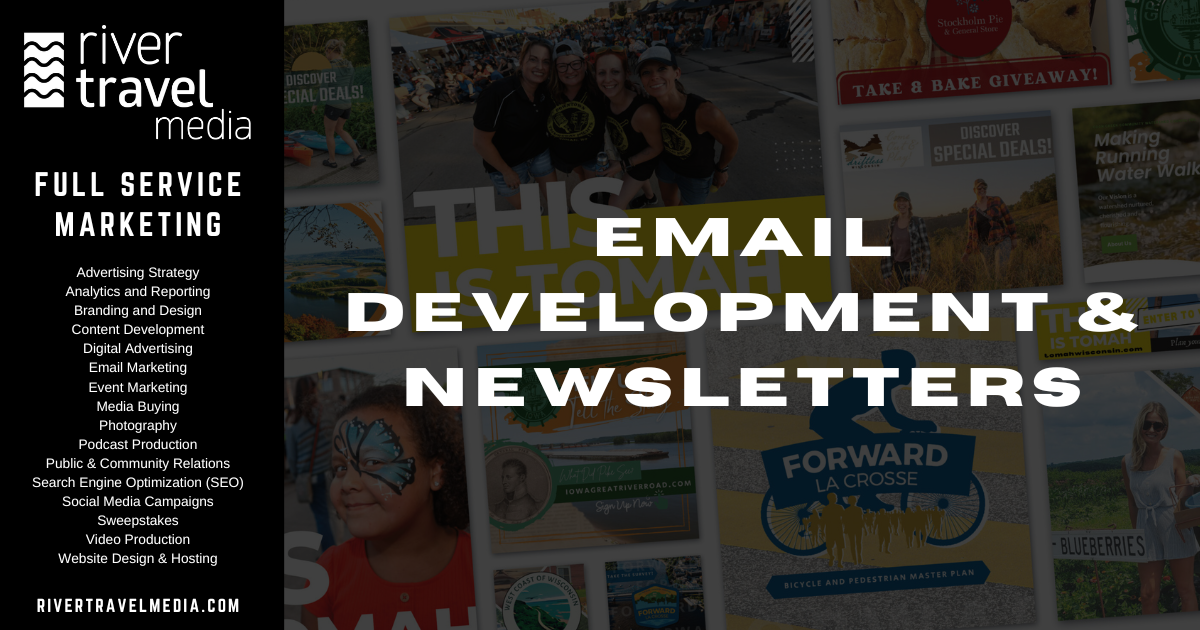Mastering Email Development & E-News: A Comprehensive Guide
In the ever-evolving digital marketing landscape, email remains one of the most powerful tools for businesses to connect with their audience. Whether it’s through beautifully designed newsletters or targeted promotional emails, effective email development can drive engagement, boost sales, and create long-term customer relationships. In this blog, we’ll explore the fundamentals of email development and e-news, their benefits, and best practices to help you create impactful email campaigns.
What is Email Development?
Email development involves creating email templates that are visually appealing, functional, and optimized for various devices. It encompasses everything from designing the layout and writing content to testing the emails for compatibility and deliverability.
The Importance of Email Development
- Direct Communication: Email provides a direct line of communication with your audience, allowing you to deliver personalized messages straight to their inboxes.
- High ROI: Email marketing has one of the highest returns on investment (ROI) of any marketing channel. For every dollar spent on email marketing, the average return is $42.
- Customer Engagement: Well-crafted emails can engage customers through personalized content, special offers, and interactive elements, driving higher open and click-through rates.
- Brand Awareness: Regular email newsletters help keep your brand top-of-mind with your audience, ensuring they stay informed about your latest products, services, and updates.
What is E-News?
E-news, or electronic newsletters, are regular email communications that provide subscribers with updates, news, and valuable content related to your business or industry. They are designed to keep your audience informed and engaged, often containing a mix of articles, promotions, event information, and other relevant content.
Benefits of E-News
- Builds Relationships: Regularly sending newsletters helps build and maintain relationships with your subscribers by providing consistent, valuable content.
- Drives Traffic: E-newsletters can drive traffic to your website, blog, or social media pages by including links to your latest posts or special offers.
- Enhances Brand Loyalty: By delivering useful and engaging content, newsletters can enhance brand loyalty and keep your audience coming back for more.
- Segmented Marketing: Newsletters allow for segmentation, enabling you to send targeted content to different subscriber groups based on their interests and behaviors.
Best Practices for Email Development & E-News
- Define Your Goals: Before creating your emails, define clear goals. Are you aiming to increase sales, drive traffic to your website, or simply keep your audience informed? Your goals will shape your content and design.
- Know Your Audience: Understand your audience’s preferences, interests, and behaviors. Use this knowledge to create personalized and relevant content that resonates with them.
- Craft Compelling Subject Lines: Your subject line is the first thing recipients see. Make it compelling and relevant to encourage opens. Avoid spammy words and keep it concise.
- Design for Mobile: With a significant portion of emails being opened on mobile devices, ensure your emails are mobile-friendly. Use responsive design techniques to ensure they look great on all devices.
- Personalize Your Content: Use personalization techniques such as addressing subscribers by their names and tailoring content based on their past interactions with your brand.
- Include Clear CTAs: Your emails should have clear and compelling calls-to-action (CTAs) that guide recipients toward the desired action, whether it’s making a purchase, reading a blog post, or signing up for an event.
- Test and Optimize: Before sending your emails, test them across different email platforms and devices to ensure they display correctly. Use A/B testing to experiment with different subject lines, designs, and content to see what works best.
- Analyze Performance: Use analytics tools to track the performance of your email campaigns. Key metrics to monitor include open rates, click-through rates, conversion rates, and unsubscribe rates. Use this data to refine your strategy and improve future campaigns.
Conclusion
Email development and e-news are essential components of a successful digital marketing strategy. By creating well-designed, personalized, and valuable emails, you can engage your audience, drive traffic, and achieve your marketing goals. As with any marketing effort, continuous testing, optimization, and adaptation are key to staying ahead in the ever-changing digital landscape.
For more in-depth insights and up-to-date trends in email marketing, consider exploring resources from the Email Marketing Association, HubSpot, and Mailchimp.
Contact River Travel Media for more information on our services.
References
- Campaign Monitor. (2023). “The 2023 Email Marketing Benchmarks Report”. Retrieved from Campaign Monitor
- HubSpot. (2023). “The Ultimate Guide to Email Marketing”. Retrieved from HubSpot
- Mailchimp. (2023). “Email Marketing Field Guide”. Retrieved from Mailchimp
- Litmus. (2023). “Email Client Market Share Trends”. Retrieved from Litmus
- Email Marketing Association. (2023). “Best Practices for Email Development”. Retrieved from Email Marketing Association
- Marketing Land. (2023). “Why Email Marketing Still Outperforms Other Channels”. Retrieved from Marketing Land
- Constant Contact. (2023). “The Importance of Mobile-Friendly Emails”. Retrieved from Constant Contact

